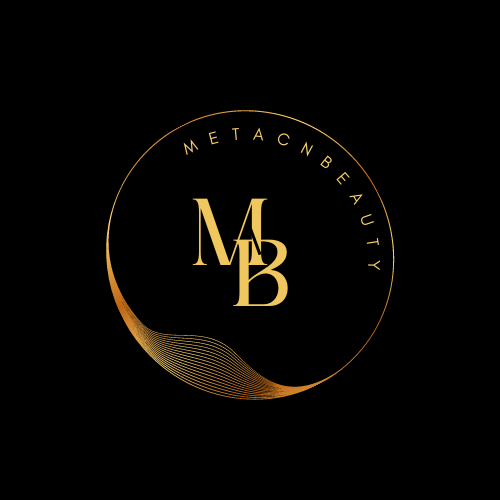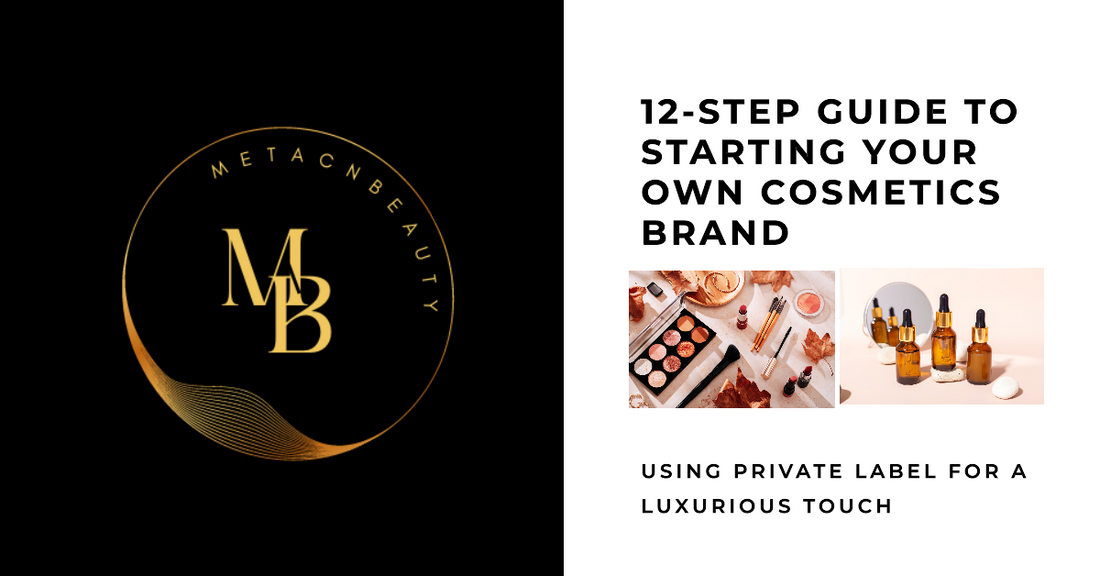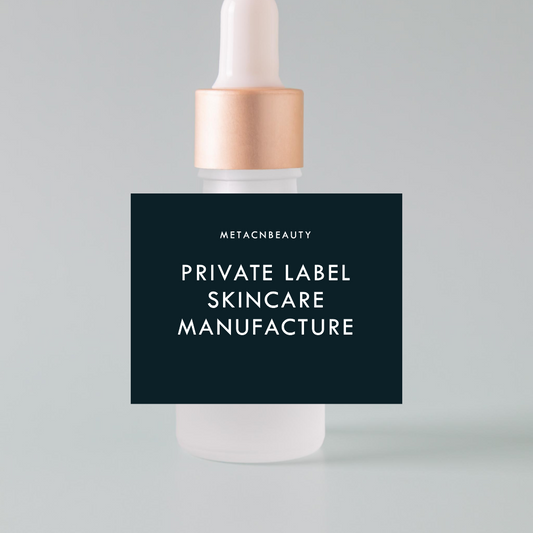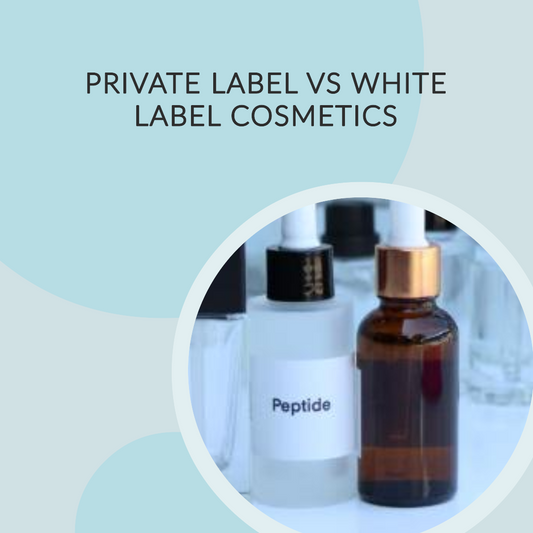In a world where celebrity makeup and skincare brands seem to achieve overnight success, the journey into cosmetics Private Label manufacturing can be both thrilling and daunting. However, these "instant successes" are rarely accidental. They are the result of meticulous planning, strategic branding, and collaboration with top-tier cosmetic manufacturers. Fortunately, emerging brands can also access these resources, leveling the playing field.
In this guide, we’ll cover everything up-and-coming brands need to know about cosmetics Private Label manufacturing step by step.
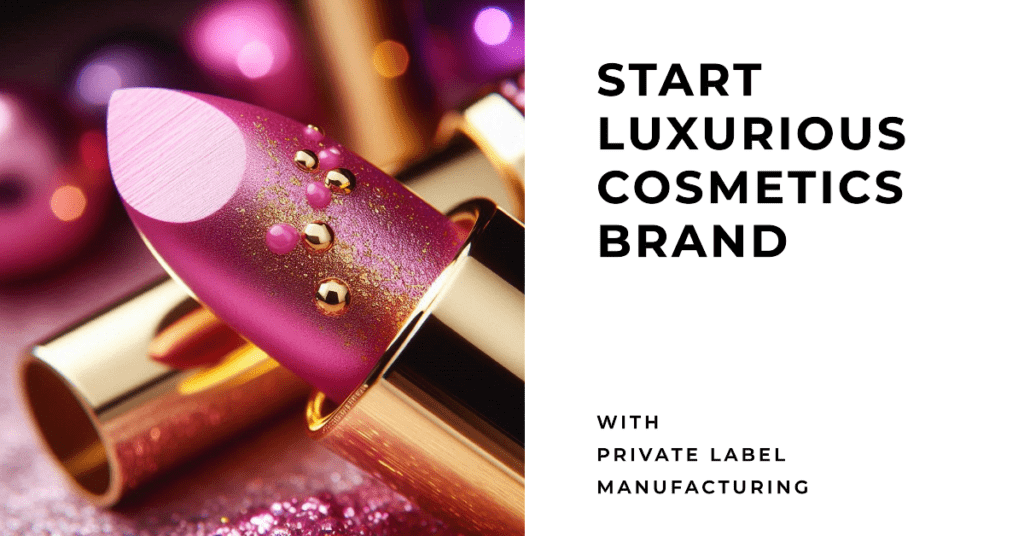
Step 1: Understand Your Needs Before Cosmetics Private Label Manufacturing
1.1 Identify Your Target Market:
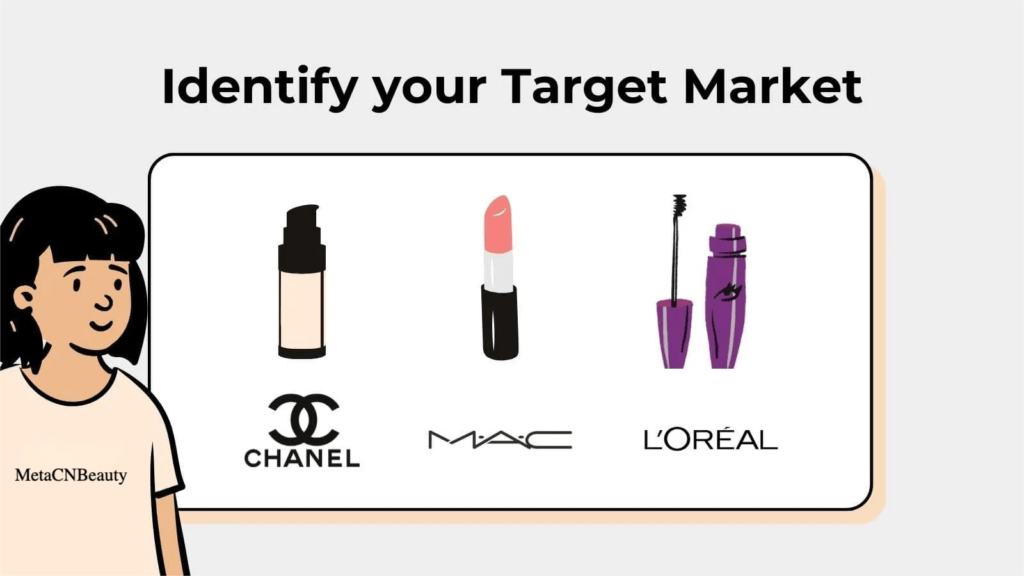
The first crucial step in cosmetics manufacturing is determining whether your product line will appeal to mass market, medium market, or high-end market shoppers. Identifying hallmark brands in each market can help you decide where your lineup fits.
Cosmetic Manufacturing for the Mass Market
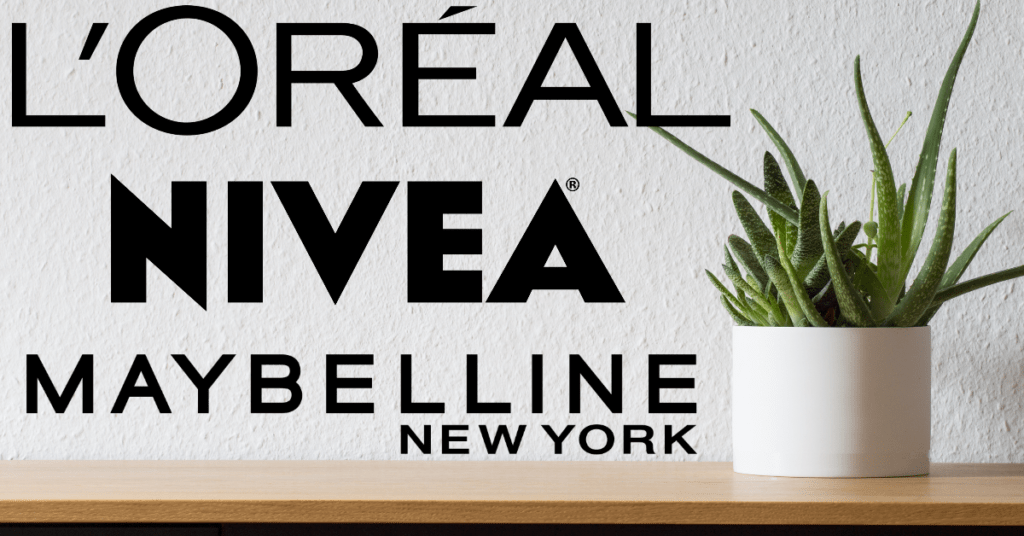
In the cosmetics industry, mass market is synonymous with "drugstore cosmetics." Brands like Nivea, L'Oréal, Revlon, Maybelline, CoverGirl, and Neutrogena dominate this space with affordable, accessible, and highly recognizable products. However, entering this market means competing with established brands heavily marketed by multinational corporations. Price sensitivity is high in this category, so bulk manufacturing to reduce the price per unit is essential for competitiveness.
Cosmetic Manufacturing for the Medium Market
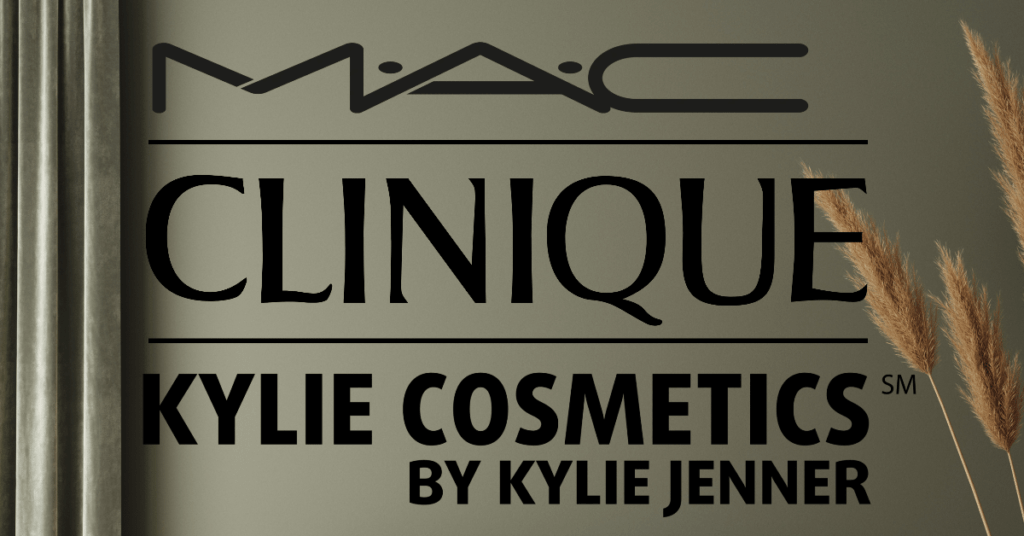
Medium-market customers are willing to pay more for better quality, niche ingredients, and unique packaging. Brands such as MAC, Clinique, Kylie Cosmetics, and Origins cater to this segment with products that offer a balance of quality and price. Unique selling propositions (USPs) like organic ingredients or seasonal themes can justify the higher price points.
Cosmetic Manufacturing for the High-End Market
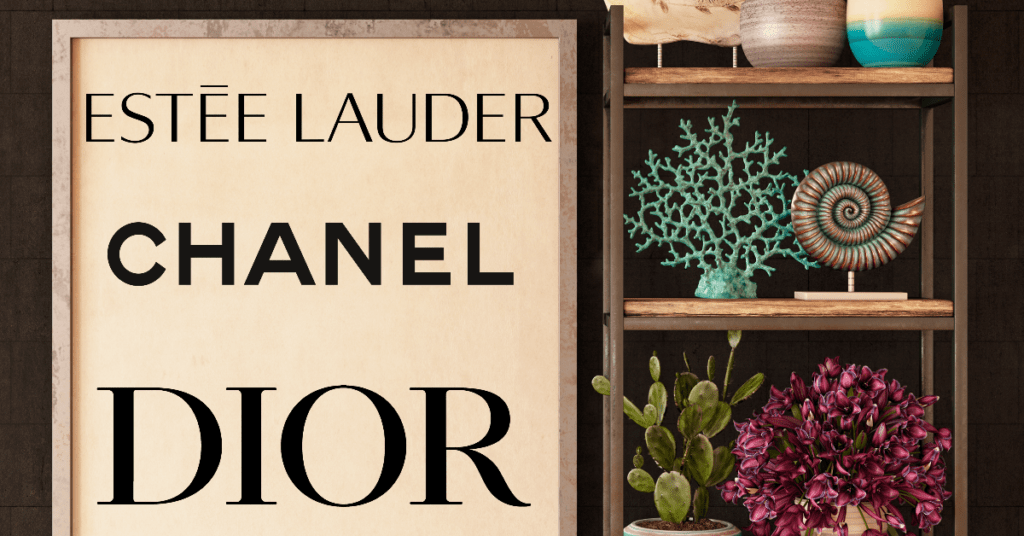
High-end cosmetics are characterized by prestige, exclusivity, and superior quality. Brands like Chanel, Estée Lauder, Lancôme, and La Mer epitomize this market. Here, higher prices reinforce the luxuriousness and exclusivity that customers value. Elite ingredients, quality formulations, and branding that exudes exclusivity are essential.
1.2 Which regions or countries do you plan to market your products in?
You needs to develop marketing strategies and product positioning suitable for local markets for different geographical regions and countries. This will help you better grasp market demand and improve the competitiveness of its products worldwide.
Step 2: Select Your Category and Products
Once you've identified your market segment, the next step is building your product lineup.

2.1 Know your desired product line and the quantity you are planning to start with.
Are you interested in launching a makeup product line (like lipstick, lipgloss, lipliner, eyeshadow, mascara, foundation, primer, etc.) or a skin care product line or others?
And What quantity are you planning to start with? Such as 1000PCS ,5000PCS ,10000PCS .
2.2 Set Your Cosmetics Private Label Manufacturing Budget
Creating a budget is critical before planning your cosmetic line. While some brands invest in multiple products from the start, others find it more advantageous to push a single breakout product. Multi-product lines can increase average cart values and scalability.
2.3 Identify a Niche
In the crowded beauty space, finding a niche can set your brand apart. Consider products missing from the current market or use surveys to pinpoint underserved customers looking for specific solutions.
2.4 Select Introductory Products
Strategically releasing product categories, like lip kits or eye kits, can attract customer loyalty by showcasing your brand's strength in one area before expanding.
Step 3: Distribution Channels
What distribution channels are you currently using? Options include:
- Door-to-door Sales
- Home Shopping
- Own Website
- Social Media (Instagram, Facebook, YouTube, etc.)
- E-Commerce (Amazon, T-mall, etc.)
- Beauty & Drug Stores (Sephora, Ulta, Watsons, etc.)
- Professional Stores (Salons, Clinics, etc.)
- Supermarkets
- Pharmacies
- Hospitals and Clinics
- Network / Mail Order Sales
- Other
Step 4:Set the Price
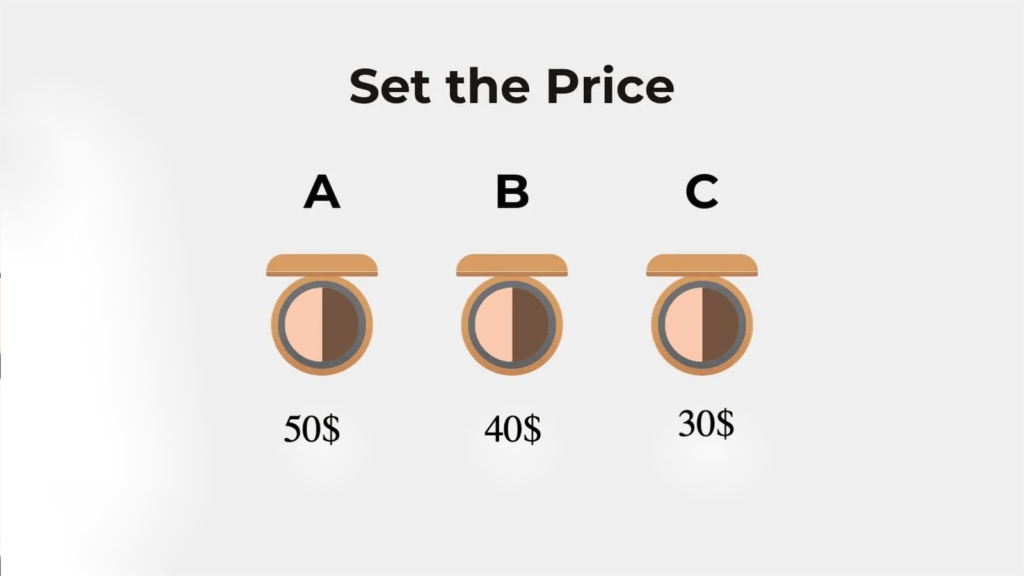
Pricing your products requires market research to determine what competitors are charging. For example, a new brand releasing bronzers in the medium market should establish an average price among competitors. Pricing should cover production, marketing, and overhead costs while ensuring profitability and matching the target market's expectations.
Step 5: Choose a Cosmetics Manufacturing Method
How will you bring your cosmetic products to life? Most brands today use white label or private label manufacturing.
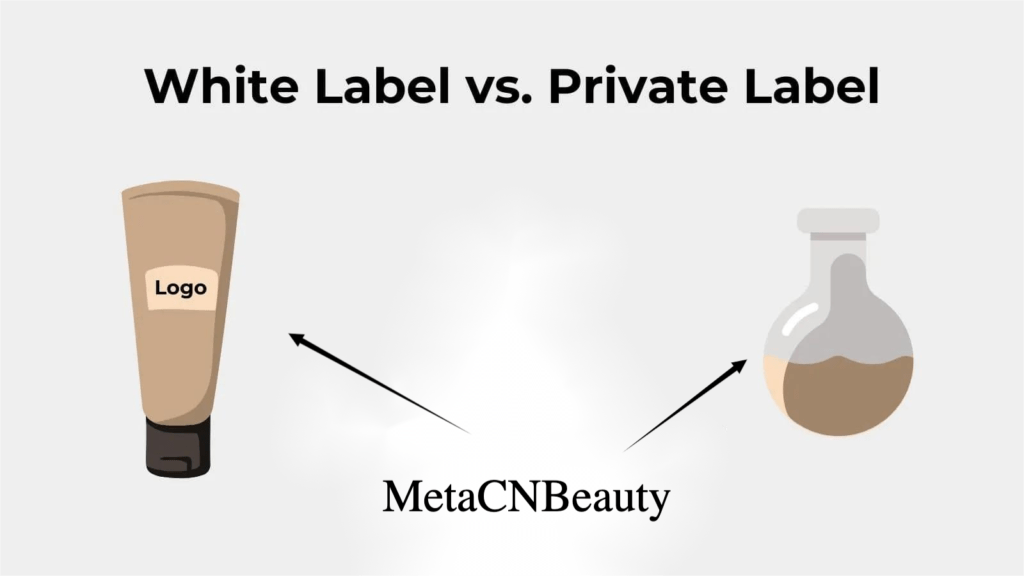
White Label Cosmetics Manufacturing
White label service allows you to select pre-existing formulas and products from our catalog and rebrand them as your own. With this option,you can save time and resources on product development and more focus on building your brand , marketing and customer base.
If you prefer to focus on branding and marketing rather than product development, white label manufacturing service may be the right choice for you.
Consider the following benefits of white label manufacturing:
* Access to a wide range of ready-made products
* Ability to quickly launch your makeup line
* Opportunity to leverage the expertise of experienced manufacturers
* Flexibility to expand your product offering
* MOQ requires a start of 100 units or above
* Capital requires very small amount of it , as low as a few hundred bucks
However, customization is usually limited to labeling or logo
Private Label Cosmetics Manufacturing
Private label manufacturing involves customizing existing products or developing entirely new formulations, with the option to customize ingredients, fragrances, packaging, etc.
More focus on product development
If you prefer to focus more on product development
Private label manufacturing service is an excellent choice for you
By choosing private label manufacturing, you can enjoy the following advantages:
* Ability to establish a distinct brand identity
* Opportunity to differentiate your products in the market
* Flexibility to adjust formulations according to customer preferences
* Control over product pricing and profit margins
* MOQ requires 12000unit/item
* Capital requires start from 10k USD or above.
However, This method requires a higher investment, with minimum order requirements typically starting at 10,000 units(Here is why they need that QTY). it allows for greater customization and differentiation from other brands.
At MetaCNBeauty Cosmetic Private Label Manufacturing Service, we are offering two common options for cosmetic manufacturing service: The Private Label Manufacturing Service and The white label Manufacturing Service to help you launch your brand successfully.
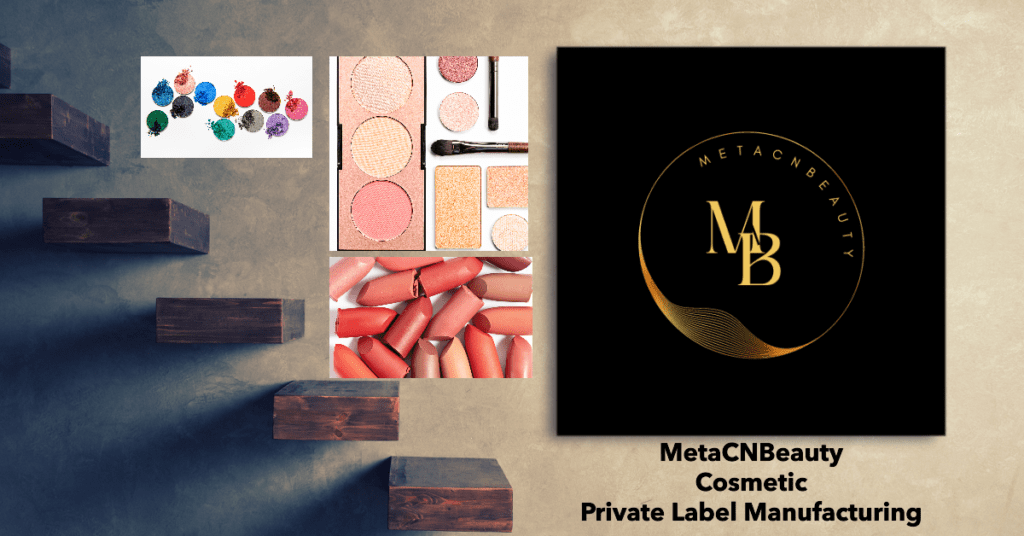
Step 6: Work With MetaCNBeauty Cosmetics Manufacturer
6.1. Get Connected With Manufacturer
First, establish a connection with the manufacturer by reaching out via email or phone to be paired with your account manager. They will guide you through the process.
6.2. Sample Selection, Order And Dispatch:
Choose your favorite sample product from the cosmetics manufacturer's product catalog, or describe your ideal product. They will deliver a sample to you. When you receive the sample, you can start testing it.
6.3.Feedback,Adjust or Develop Your Formulation:
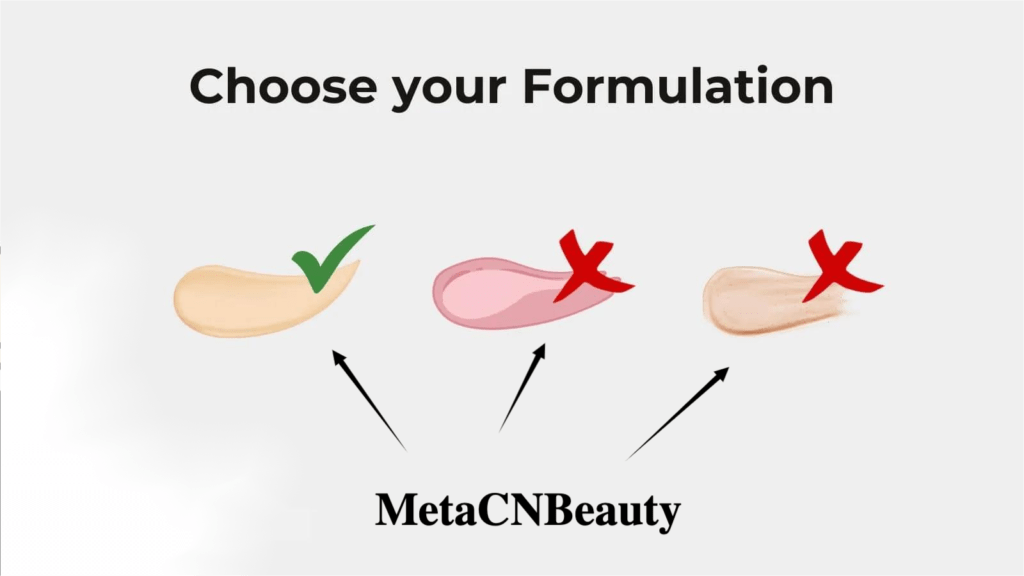
Bringing a product to life from scratch can be time-consuming. With private label manufacturing, you can create unique cosmetics that meet your specifications without worrying about the specific ingredients and chemical details. The manufacturer handles formulation based on your requirements.
After testing the sample, give your feedback or request any adjustments.
6.4.Select and Design Your Primary and Secondary Packaging:
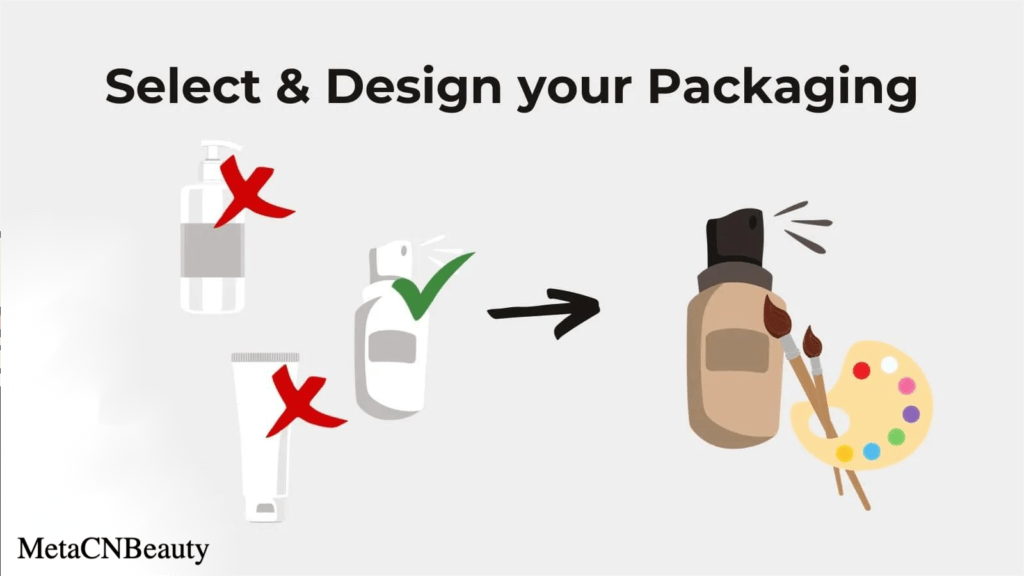
Packaging is almost as important as the product itself. There are two layers of packaging to consider:
Primary Packaging
This is what directly holds your product, like a lipstick tube or face cream jar. It needs to be functional and aesthetically pleasing. Customization of primary packaging is possible with private label manufacturing.
Secondary Packaging
Secondary packaging, like a box or carton, serves as an additional layer. It offers an opportunity for creative design and displaying product information without cluttering the primary container.
Step 7: Craft a Sales Plan
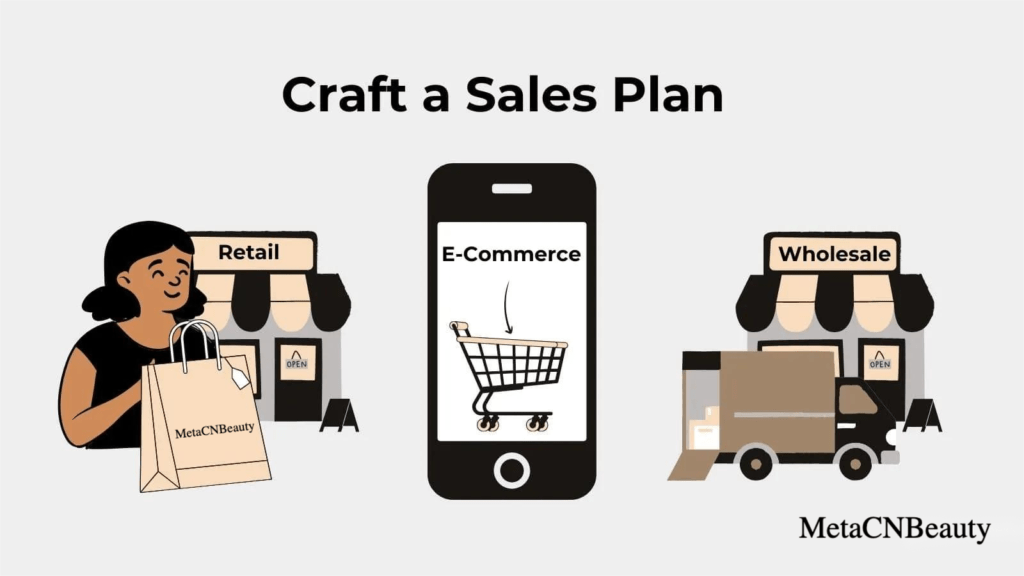
How will you sell your new products? Many brands start with direct-to-consumer sales through retail websites. Launching online is standard, but you can also pitch to major retailers like Sephora, Ulta, and Target. Major distribution deals can lead to high profits but may require profit-sharing contracts.
Step 8: Pay Attention to Compliance
The cosmetics industry is heavily regulated to ensure product safety. Compliance involves adhering to safety, manufacturing, labeling, and marketing regulations. Partnering with a reputable private label manufacturer can help ensure all regulations are met.
Launching a cosmetics line may seem complex, but with the right planning and partnerships, it can be a rewarding endeavor. By following these steps and leveraging the expertise of established manufacturers, you can create a successful and compliant cosmetics brand. Contact us today to learn how we can help you bring your brand to life.
Step 9: Build Your Brand Identity
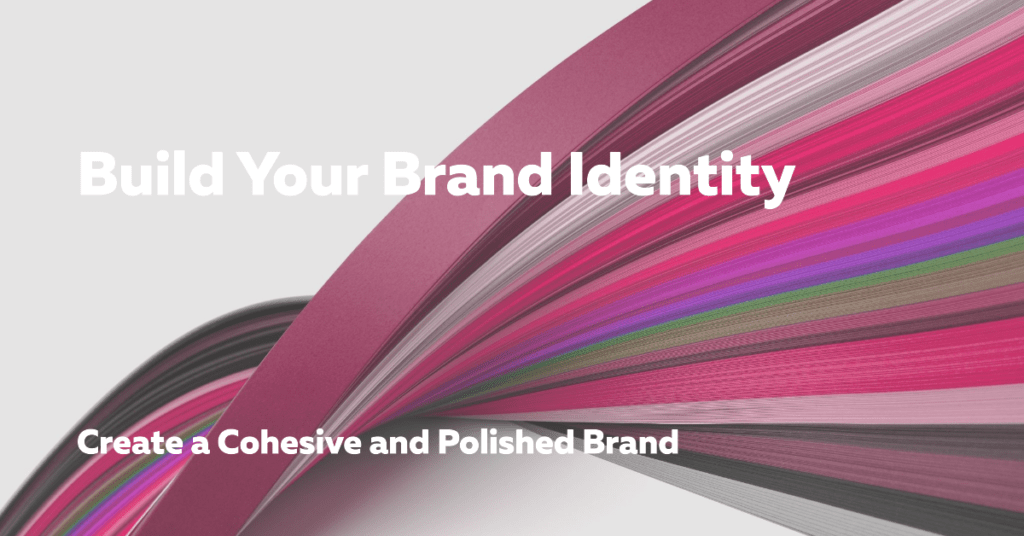
Your brand identity is more than just your logo; it's the personality of your company. It includes your brand’s mission, vision, values, voice, and the overall aesthetic that sets you apart from competitors. Building a strong brand identity is crucial for connecting with your target audience and fostering loyalty.
Define Your Brand’s Mission and Vision
Your mission statement should clearly articulate what your brand stands for and what it aims to achieve. The vision statement, on the other hand, outlines the future aspirations of your brand. Together, these elements guide your branding efforts and business decisions.
Develop a Consistent Brand Voice
The way you communicate with your audience should be consistent across all platforms, whether it’s through your website, social media, or customer service. Your brand voice should reflect your brand’s personality and resonate with your target market.
Design a Memorable Logo and Visual Identity
Your logo and visual identity should be easily recognizable and reflect the essence of your brand. Consistency in colors, fonts, and imagery across all marketing materials strengthens brand recognition.
Step 10: Implement a Marketing Strategy

A well-rounded marketing strategy is essential for reaching your target audience and driving sales. This includes both online and offline marketing tactics.
Digital Marketing
Digital marketing is crucial in today’s connected world. Utilize social media, search engine optimization (SEO), email marketing, and influencer partnerships to reach a wider audience.
Content Marketing
Content marketing involves creating valuable, relevant content to attract and engage your audience. This can include blog posts, videos, tutorials, and social media posts that showcase your products and provide beauty tips or industry insights.
Influencer Collaborations
Partnering with influencers who align with your brand can boost your visibility and credibility. Influencers can create authentic content that highlights your products and reaches their dedicated followers.
Paid Advertising
Investing in paid advertising, such as Google Ads, Facebook Ads, and Instagram Ads, can drive targeted traffic to your website and increase sales. Paid ads can be particularly effective when launching new products or promotions.
Step 11: Monitor and Adapt
Regularly monitor your brand’s performance and adapt your strategies as needed. Use analytics tools to track sales, website traffic, social media engagement, and customer feedback. This data helps you understand what’s working and where improvements can be made.
Customer Feedback
Listen to your customers and use their feedback to improve your products and services. Engage with your audience on social media, respond to reviews, and conduct surveys to gather insights.
Competitive Analysis
Keep an eye on your competitors to stay informed about industry trends and emerging opportunities. Understanding your competitors' strategies can help you identify gaps in the market and innovate your offerings.
Continuous Improvement
The beauty industry is constantly evolving, and so should your brand. Stay updated with the latest trends, technologies, and consumer preferences to continuously improve your products and marketing strategies.
Step 12: Scale Your Business With Private Label Manufacturing
Once your brand has established a solid foundation, consider scaling your business to reach new heights. This can involve expanding your product line, entering new markets, or increasing production capacity.
Expand Your Product Line
Introducing new products can attract new customers and increase sales from existing customers. Consider expanding into complementary categories such as skincare, haircare, or beauty tools.
Enter New Markets
Explore opportunities to enter new geographical markets. This could involve launching your brand in different countries or regions, each with its own unique market dynamics and consumer preferences.
Increase Production Capacity
As demand for your products grows, you may need to increase production capacity. This could involve partnering with additional manufacturers, investing in larger facilities, or implementing more efficient production processes.
Strengthen Distribution Channels
Enhancing your distribution channels ensures that your products are available where your customers are shopping. This could include partnerships with online marketplaces, retail stores, and international distributors.
Conclusion
Launching and growing a successful cosmetics brand involves a strategic approach, from identifying your target market to scaling your business. By following these comprehensive steps and leveraging the expertise of experienced manufacturers, you can create a brand that stands out in the competitive beauty industry.
We are here to support you every step of the way. Our expertise in private label cosmetics manufacturing can help bring your vision to life, ensuring high-quality products and compliance with industry standards. Contact us today to start your journey in the cosmetics industry.
This detailed guide provides the roadmap for creating and growing a successful cosmetics brand. By following these steps, you can navigate the complexities of the industry and position your brand for long-term success.
FAQ
What is the cost of starting a cosmetics brand with cosmetics private label manufacturing?
What is the Minimum Order Quantity (MOQ)cosmetics private label manufacturing service required to start a cosmetics brand?
sometimes also depend on the primary package option, maybe more or less.
